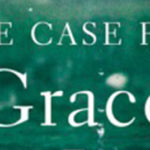It may take years to fully grasp the import of the Supreme Court’s decision in Trinity Lutheran Church v. Comer, where the court ruled 7-2 that the state of Missouri had expressly and unjustifiably discriminated against a church by disqualifying it from receiving a public benefit—scrap tire shreds to enhance playground safety—solely because of the church’s religious character.
That said, here are six initial observations about the ruling:
1. Who you are vs. what you do
The main opinion in the case, written by Chief Justice John Roberts, emphasizes the focus should be on what entities do with government aid, not their religious character. In this respect, the decision can be counted as belated judicial validation of former President George W. Bush’s faith-based initiative.
Bush insisted religious bodies must not be disqualified from seeking government aid because of their religious character. What mattered was what they did, not who they were.
Roberts’ opinion asserts this approach is essential to secure religious freedom, while the dissenting opinion—written by Justice Sonia Sotomayor and joined by Justice Ruth Bader Ginsburg—insists it leads to government support for faith and fosters religious dependence on and entanglement with the state, at least when direct aid flows to entities like churches.
2. The limiting footnote
Due to the fractured nature of the ruling, its scope is somewhat unclear and thus will now be a subject with which lower courts must grapple. A limiting footnote in Roberts’ opinion states: “This case involves express discrimination based on religious identity with respect to playground resurfacing,” not “religious uses of funding or other forms of discrimination.”
But the court majority split over this footnote, with Justices Anthony Kennedy, Samuel Alito and Elena Kagan supporting it, and Justices Clarence Thomas and Neil Gorsuch rejecting it.
Sign up for our weekly edition and get all our headlines in your inbox on Thursdays
To complicate matters further, Justice Stephen Breyer wrote separately to say the case stands only for the proposition that, just as religious entities cannot be denied services such as police and fire protection, they cannot be cut off from participation in government programs designed to protect the health and safety of children.
Given these features of the decision, the fact restrictions similar to Missouri’s are embedded in many state laws and the court’s action, vacating a series of school aid decisions and remanding them for further consideration in light of Trinity Lutheran, the stage has been set for battles in the lower courts about the decision’s reach.
3. Conditions on government aid
The next phase of the debate also is likely to focus on certain conditions that follow government aid. For example, some states and localities have placed, or will place, conditions on government aid that prohibit recipients from discriminating on the basis of religion, sexual orientation and/or gender identity.
If a religious body objects to certain applications of these conditions, must the state still permit it to compete for the aid? While some justices emphasized that Trinity Lutheran left such issues for another day, these battles have been brewing and now will be considered in light of this decision.
4. Gorsuch’s thinking
In his first writings as a Supreme Court justice in a church-state case, Gorsuch sounded a lot like Justice Antonin Scalia. In a separate opinion partially concurring with Roberts’ opinion, Gorsuch seemed to suggest the state might not only be required to refrain from disqualifying entities from aid programs based on their religious character but also to extend aid to religious as well as nonreligious entities even when the aid would be used for religious activities.
Current law bars the government from allowing direct aid to subsidize religious activities. It appears Gorsuch does not subscribe to this principle. Neither did Scalia.
5. The four more progressive justices disagree
Kagan and Breyer read the First Amendment’s Free-Exercise Clause more broadly than Sotomayor and Ginsburg do, and they read its Establishment Clause more narrowly. Sotomayor and Ginsburg asserted the Establishment Clause does not allow Missouri to grant the church’s funding request. Alternatively, they said Missouri should be permitted to deny the aid due to concerns about governmental advancement of religion.
Perhaps because both Kagan and Breyer have worked in other branches of the federal government and understand the degree to which churches and other religious organizations are already included in a wide range of aid programs, they were uncomfortable shutting out houses of worship simply because of their religious identity.
It seems very likely, however, that these four justices will be more aligned in future cases involving what all of them would consider to be religious uses of government aid and perhaps also in cases involving certain conditions following government funds.
6. The continuing search for consensus
Chief Justice Roberts remains committed to the goal of building greater cohesion on the court. Unlike some other church-state decisions, this ruling did not split neatly along party lines. Two justices who were appointed by Democratic presidents, Kagan and Breyer, agreed with five justices who were appointed by Republican presidents, Roberts, Kennedy, Thomas, Alito and Gorsuch.
In 2006, a newly minted Chief Justice Roberts said, “There are clear benefits to a greater degree of consensus on the court,” and he noted speaking with one voice helps “promote clarity and guidance for the lawyers and for the lower courts.”
The key, he said, is to rule on the narrowest grounds possible. It appears Roberts tried mightily to meet these goals in this case, with only partial success.
Now the divisions revealed in the ruling will be fodder for church-state debates for months and likely years to come.
Melissa Rogers serves as a nonresident senior fellow at the Brookings Institution and formerly served as a special assistant to President Obama and director of the White House Office of Faith-based and Neighborhood Partnerships. Religion News Service distributed this column.














We seek to connect God’s story and God’s people around the world. To learn more about God’s story, click here.
Send comments and feedback to Eric Black, our editor. For comments to be published, please specify “letter to the editor.” Maximum length for publication is 300 words.